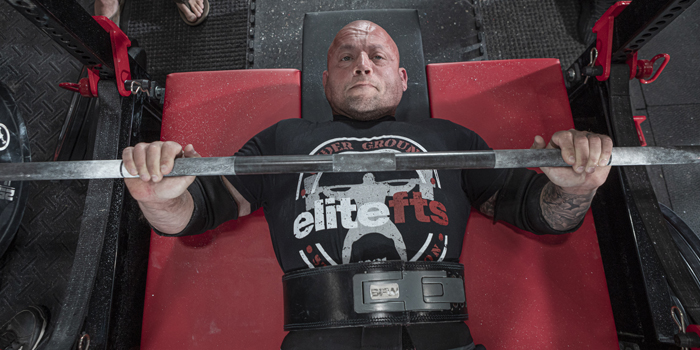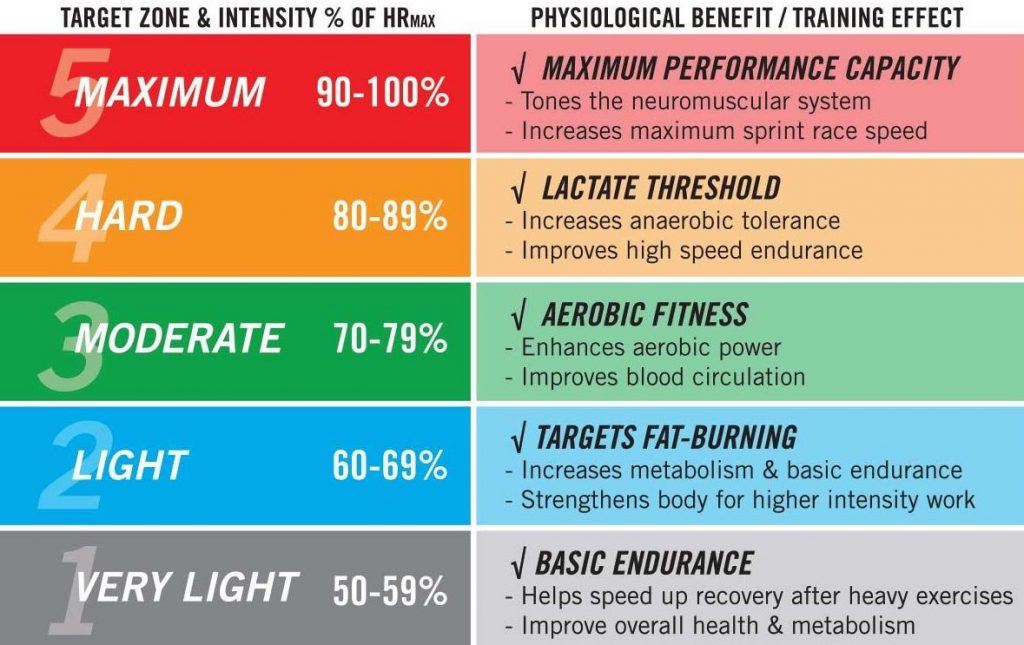
I can't seem to keep my combating itches for running and lifting at bay. I'm not sure if it's my military background or my experience as a young wrestler and soccer player, which all require strength, speed, and stamina to perform sufficiently. Perhaps it's the desire to be healthy, fit, and well-rounded in hopes of maximizing quality of life. It might be the contrasting, yet distantly related, feelings of overcoming new challenges in the forms of miles versus pounds. I may never have an elite powerlifting total or qualify for the Boston Marathon, but I'll be damned if I don't keep chasing and breaking my own records year after year, both under the bar and in running shoes.
Concurrent training, commonly known as hybrid training, can be a frustratingly fine line to walk. If you don't intelligently regulate your efforts—that is, lifting and running, or any other form of endurance modality you might train—you won't get the results you want. One must periodize their strength and endurance training to prevent them from hindering one another.
While the template below isn't the recipe for a 1000-pound squat or a 2:30 marathon, it's a great way to train for endurance and strength concurrently and benefit a wide range of training populations. It should not be used by an athlete training for a specific event (race, meet, etc.) with the intention of "peaking." It is, however, a very sustainable approach to getting and staying strong, fast, and fit that can be used year-round for populations that don't compete and in the offseason for those that do.
To use myself as an example, I'm running this program right now as I train for a short four-mile trail race (two months out) with no specific time or podium goal. Following the race, I plan on changing my training in preparation for what will be my first powerlifting meet (nine months out) where I have established numbers I want to hit.
To recap, populations that would benefit from running this template include:
- Runners (or other endurance athletes, including swimmers and bikers), competitive or not, with a desire to introduce or increase strength training
- Offseason athletes, of any sport or age group, with a desire to improve body composition and conditioning
- General fitness population with a desire to be well-rounded physically
My final caveat before I get down to it: I know that not everybody can or should run. You can execute this training template with pretty much any form of conditioning: walking, swimming, rowing, biking, Prowler®/sled. Go forth and improve your submaximal strength, work capacity, and overall athleticism.
5/3/1 and Run Program
Monday:
- Squat (or Deadlift, whichever main lower body lift you find more taxing) 5/3/1
- Supplemental Sets
- Lower Body Accessories + Core
Tuesday:
- Tempo/Speed Run or Intervals
Wednesday:
- Bench (or Press, whichever main upper body lift you find more taxing) 5/3/1
- Supplemental Sets
- Upper Body Accessories + Core
Thursday:
- Moderate Effort, Medium Distance Run
Friday:
- Deadlift 5/3/1
- Press 5/3/1
- Conditioning Circuit
Saturday:
- Long Slow Distance
If you can't train six days a week, combine the strength and conditioning days, reduce the volume, and separate the workouts by a few hours if possible. For example:
Day 1:
- Lower Body Lift (no supplemental sets, minimal accessories)
- Speed/Tempo/Interval Workout
Day 2:
- Full Body Lift (no conditioning circuit)
- Moderate, Medium Distance Workout
Day 3:
- Upper Body Lift (no supplemental sets, minimal accessories)
- Long Slow Distance
Running
Tempo/Interval Run: This is your day to run hard. It might seem counterintuitive to place this day right after a lower body workout, but there is a method to the madness. If fatigued or sore after squatting or deadlifting the day prior, one would have a frustratingly tough time keeping their heart rate (and level of fatigue) down during a long run with the purpose of building aerobic capacity by logging miles at a lower intensity. If your legs are screaming and your heart is pounding on speed day, that's fine. We want to be in Zone 4 or 5 (see below for heart rate zone explanations) anyway. This workout will be the shortest of the week for a reason, but it's where you'll build your speed. Your mileage/volume will vary depending on your running background and goals for each run workout.
Example Run Workouts*
*Note: The semi-colons separate different workout examples for a given day/group.
Tempo/Interval Workouts
- Beginner: 5x 1 Minute Run, 2 Minute Walk; 8x200M repeats; Mile or Half-Mile Run for time
- 5K Runner: 5x 400M repeats; 2 Mile Run below race pace
- Marathon Runner: 10x 1K Repeats; 8-10 Mile Run below race pace
- Non-Runner: Rower, Airbike, SkiErg, Prowler®/Sled Intervals; 30 Minute Walk, faster than normal walk pace w/ weight vest
- Moderate Effort Run: This should be a Zone 3 workout; in layman's terms, this run will be faster than your easy conversational ones but should not leave you gasping for air.
Moderate Runs
- Beginner: 20 Minute Jog
- 5K Runner: 3-5 Mile Run
- Marathon Runner: 9-15 Mile Run
- Non-Runner: 20 Minute Row/Bike/Sled; 45 Minute Walk, weight vest optional
Long Slow Distance
Distance running is where we really make our money in terms of building aerobic capacity. Heightened aerobic capacity equals better sleep, a lower resting heart rate, and faster recovery between sets and workouts. Psychologically, this is the hardest workout of the week, especially for those who are used to pushing themselves into the red in every workout. It can also be extremely boring. Slow it down, run/walk with a buddy, and keep it at a pace where you're comfortable talking for the duration. If you train alone, throw on some music, tune into Dave Tate's Table Talk, or call your mother for once. Your heart rate should be in Zone 2 or the lower side of Zone 3 throughout. If you start to get out of breath, slow down/walk/stop for a few minutes to bring your heart rate down.
Long Slow Distance
- Beginner: 30 Minute Jog; 45 Minute Run/Walk
- 5K Runner: 6-8 Mile Run
- Marathon Runner: 16+ Mile Run
- Non-Runner: 30 Minute EASY Row/Bike/Sled; 60 Minute Walk, no weight vest
If you're not sure where to start in regards to volume or distance, do as Wendler commands and Start Too Light. Increase total mileage by roughly 10% each week. If you're an experienced runner and want to run more than three times per week, Wednesday after the upper body lift and/or Sunday are great days to add some more low-intensity miles. For any level of fitness, I recommend walking daily.

Lifting
For all of the main lifts (squat, bench, deadlift, and press), we will follow Jim Wendler's 5/3/1 programming. Jim generally recommends lifting three days per week, only doing one main lift per workout, and pushing the fourth to the following week. Personally, I like keeping my workouts the same every week. I am also operating under the assumption that an athlete following a concurrent training program that includes both running and barbell lifting has the capacity to do two main compound movements in the same workout. Feel free to adjust this as necessary.
Additionally, feel free to utilize variations for your main lifts—front squat, safety squat bar, incline bench press, floor press, hex bar deadlift, etc. Keep the main lifts the same for at least two 5/3/1 cycles before changing them. Again, if you're not sure where to start in regards to weight, do as Wendler commands and Start Too Light.
Supplemental Sets
Supplemental sets are optional and depend upon the athlete's experience and conditioning. It would be cautious and wise to start off running the original 5/3/1 with no supplemental sets if you are not in running or lifting "shape" when starting this program. I'm a fan of doing 3x5 First Set Last for lower body lifts and 3x5 Second Set Last for upper body lifts after the main working sets.
For the extra bench sets, I bring my grip in to address my personal weakness (triceps). I do not recommend Boring But Big or Boring But Strong, especially on lower body lifts, while doing this program. I do recommend browsing Wendler's 5/3/1 Forever book and finding a scheme that will work best for you or your athlete.
Lower Accessories
Again, you'll want to err on caution and program intelligently here. Keep volume low and avoid things that will leave your legs overly sore, like heavy eccentrics. While Jim recommends cutting out single leg work for runners, I'd argue that it can be highly beneficial (provided volume and intensity are low enough to avoid blowing you up). Unilateral work can help address imbalances in strength and mobility. With the amount of impact a runner accumulates in their training, these imbalances will, at best, decrease running performance and efficiency and, at worst, exacerbate themselves and lead to injury. Accessories I like include step-ups, lunges, RDLs (single leg w/ KB/DB and double leg w/ BB), GHRs, Nordic Hamstring Curls, and 45 Degree Back Extensions (single or double leg).
Upper Accessories
These are largely up to you as they will have little impact on your endurance training (unless you are a rower or swimmer). I recommend addressing your weaknesses, doing the lifts you like, and focusing on having strong triceps, shoulders, and back. I gravitate towards pull-ups/chin-ups, dips, rows (in all directions), and dumbbell arm exercises.
Core Work
Do not neglect your core. Hanging knee raises, ab wheels, Paloff presses, and single-arm carries are my go-to exercises.
Conditioning Circuits
These will follow the main movements of the "full body" lift day. You can come up with your own circuit, do a short CrossFit WOD/METCON (I bias towards those with simple movements such as push-ups, pull-ups, air/goblet squats, and kettlebell swings), or use any of the circuits in Wendler's books to include the WALRUS workouts. Below are two circuits from my last cycle. I re-tested them a few weeks later to check my progress.
8 Minute AMRAP
- 10 Push-ups
- 10 Kettlebell Swings
- 10 Ab Wheels
- 10 Bent Over Row
8 Minute AMRAP
- 5 Chin-ups
- 10 Dips
- 15 Goblet Squats
- 25M Farmer's Carry
Warm-ups and Recovery
Not warming up is a huge mistake. Taking 45 minutes to address every inch of your body in a warm-up is a huge waste of time. I like to keep my warm-ups short, simple, and effective.
Before runs, I do Joe DeFranco's Agile 8 and sometimes add in lower leg foam rolling, butt kickers, and high knees. Before lifts, I take my dog for a five-minute walk, do a 3-round circuit of 3 bodyweight exercises, and do 5-10 jumps or throws.
For recovery, I try to take a 10-20 minute walk in the afternoons or evenings, followed by 10-15 minutes of stretching and/or foam rolling. Feel free to throw in a quick extra workout to get some blood flow if you have the time and ability. Banded exercises such as face pulls, hamstring curls, good mornings, and tricep pushdowns are great options in addition to bodyweight work like push-ups and planks.
Finally, deload (both your lifts and running volume) after two 5/3/1 cycles or every seventh week.
If you're interested in following or learning from some good examples of athletes who train for strength and endurance concurrently, check out Hunter McIntyre, Alyssa Olenick, and Nick Bare.
If you don't run but are interested in improving your conditioning, I recommend you check out Jim Wendler and Dave Tate's Basic Training, and Jason Brown's 3 Conditioning Methods to Use With Conjugate.
References
- Brown, Jason. "3 Conditioning Methods to Use With Conjugate." Elite FTS, 27 Nov. 2020, https://www.elitefts.com/education/3-conditioning-methods-to-use-with-conjugate/.
- "Exercising for Better Sleep." Johns Hopkins Medicine, https://www.hopkinsmedicine.org/health/wellness-and-prevention/exercising-for-better-sleep.
- Luks, Howard J. "Zone 2 Heart Rate Training for Longevity and Performance." Howard J. Luks, MD, 11 Mar. 2022, https://www.howardluksmd.com/zone-2-hr-training-live-longer-less-injury/.
- Tate, Dave, and Jim Wendler. EFS Basic Training. Elite FTS, 2008.
- Wendler, Jim. "15 Ideas on Walrus Training." JimWendler.com, JimWendler.com, 16 Dec. 2020, https://www.jimwendler.com/blogs/jimwendler-com/15-ideas-on-walrus-training.
- Wendler, Jim. 5/3/1 Forever: Simple and Effective Programming for Size, Speed, and Strength. Jim Wendler LLC, 2017.
- Wendler, Jim. 5/3/1: The Simplest and Most Effective Training System to Create Raw Strength. 1st ed., Jim Wendler LLC, 2009.
Hunter Richardson serves as an infantry officer in the United States Army. He trains in a variety of ways and loves his garage gym dearly. Hunter currently volunteers as an assistant strength coach for local middle and high school athletes. You can find Hunter's training on Instagram @squatters_rites.











Thanks for reading and commenting. Hope your training is going well and that you were able to implement some of these things into your routine.
But using boring but big and doing sleds evert weight day. I’m doing bike on the days in between, but Sunday I do a long long on foot. I keep my accessories every easy and simple.
Monday
Squat 531
Squat BBB
Accessories legs and core 3 rounds only
10 rounds drag a sled
Tuesday
10 miles on bike
Wednesday
Bench 531
Bench BBB
Accessories upper body 3 rounds
Push a prowler 10 rounds
Thursday
10 mile bike
Friday
Nothing
Saturday
Deadlift 531
Trap bar 531
Accessories rows and RDLs core
Drag a sled 10 rounds
Sunday
Long run
Great article.
My only question is: could you please provide more insight on why are you recommending the Lower Body Accessories are on the Squat day instead of distributing them? For instance, why not go with Full Body Accessories on both days (as they are easier to superset)?
First of all, thank you for taking the time to read my piece and leave a comment. I really appreciate your time.
This split is nothing more than a matter of personal preference, and you could absolutely run 2 or 3 "full body" days. I elect to go with a lower/upper/full split because I'd rather hit legs twice in a week rather than three times when trying to balance lifting and running. Hope this helps!